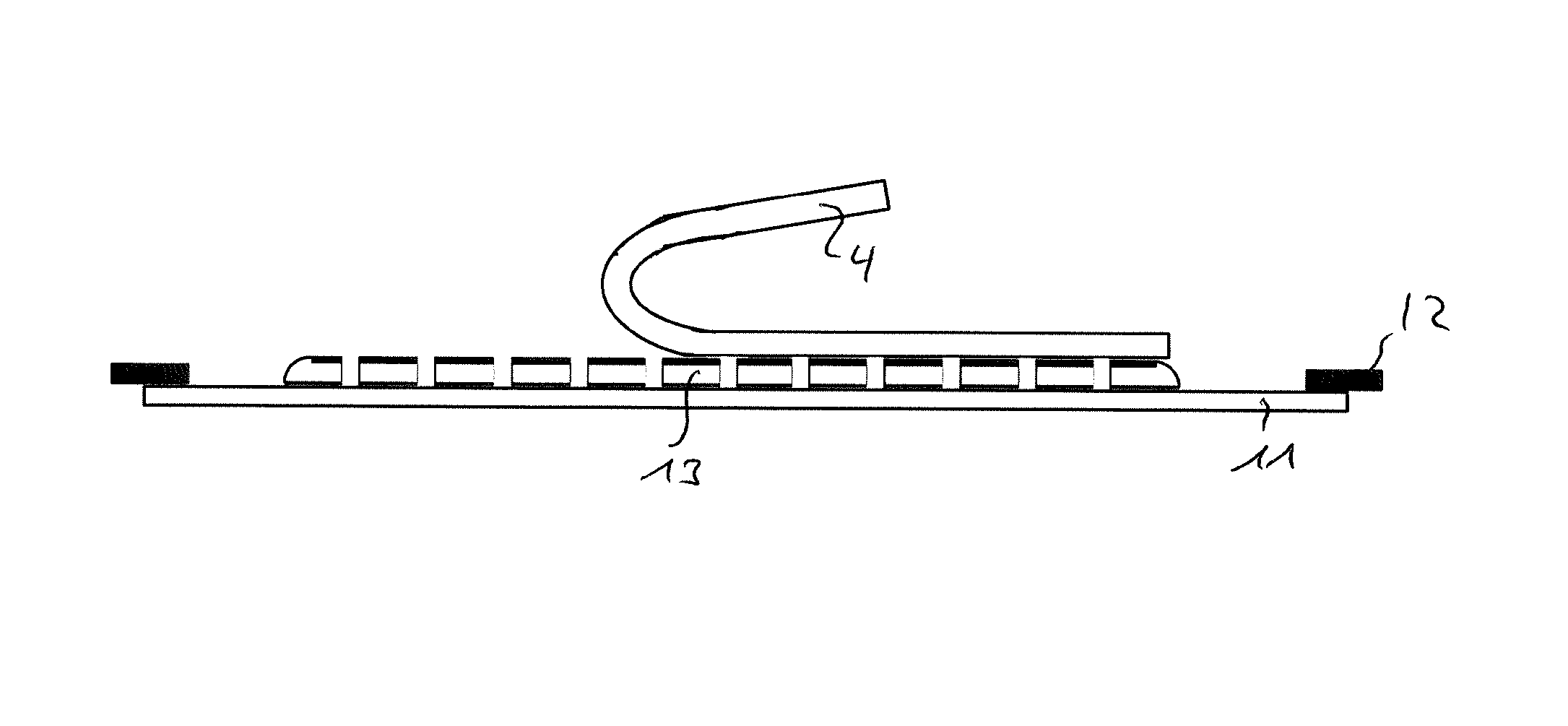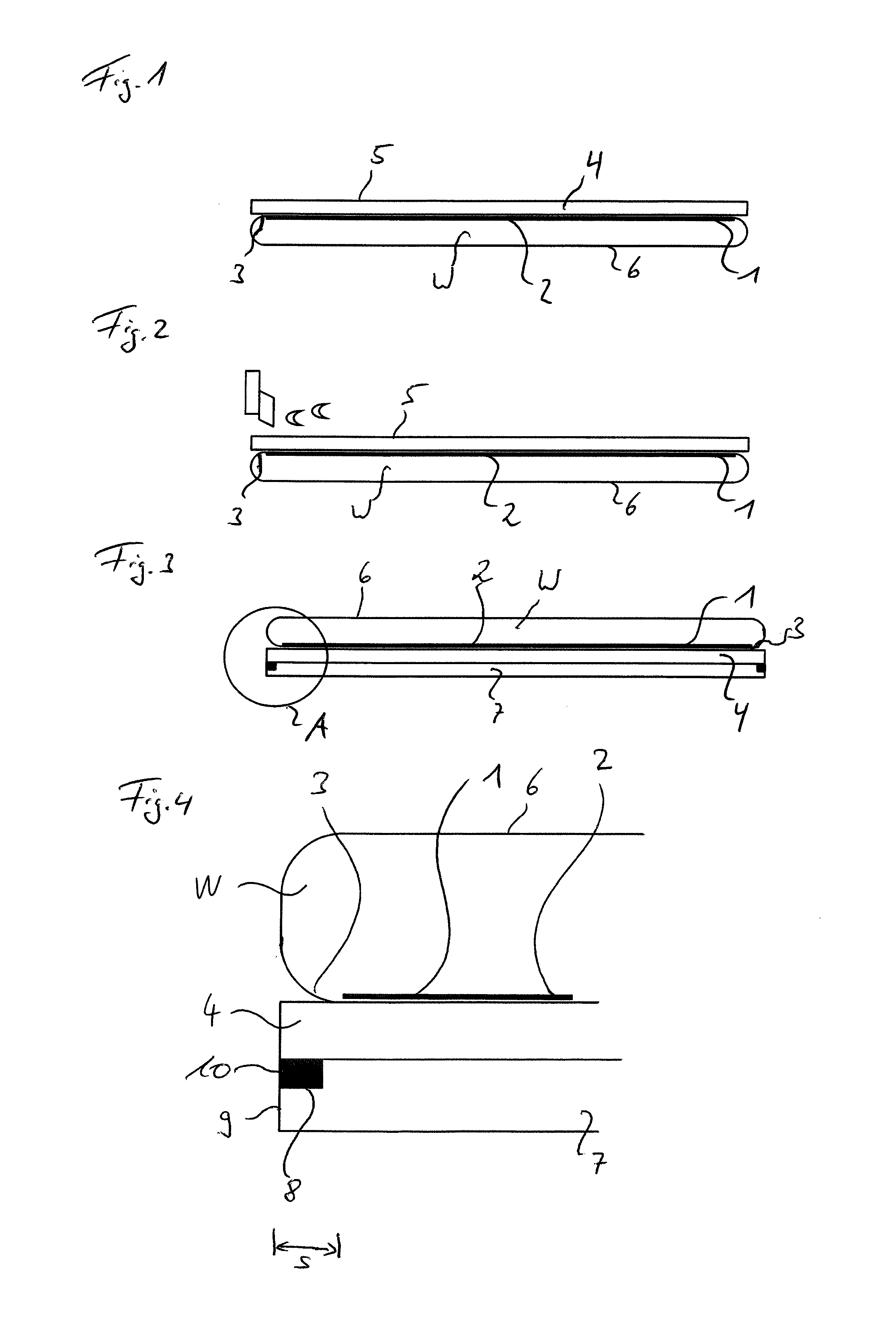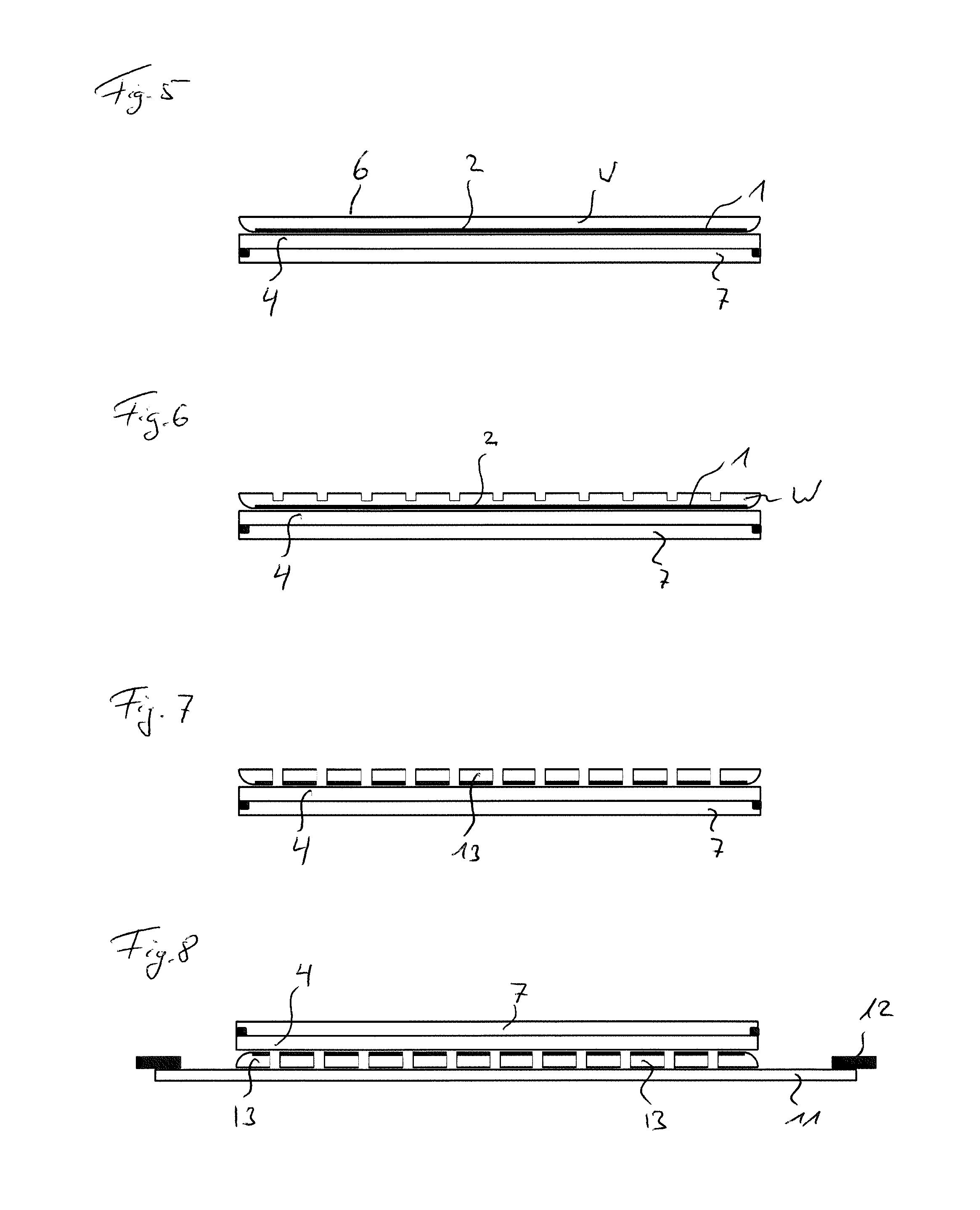Method of dividing wafer into dies
a technology of dies and wafers, applied in the direction of basic electric elements, electrical apparatus, semiconductor devices, etc., can solve the problems of large bending stress, unfavorable reuse, and damage to the devices formed on the wafer, so as to prevent the breakage of the wafer and/or the breakage of the cut, the effect of increasing processing quality and improving processing precision
- Summary
- Abstract
- Description
- Claims
- Application Information
AI Technical Summary
Benefits of technology
Problems solved by technology
Method used
Image
Examples
Embodiment Construction
[0029]A preferred embodiment of the present invention will now be described with reference to the accompanying drawings.
[0030]The following preferred embodiment relates to a method for dividing a wafer W into dies. The wafer W can be a MEMS wafer having MEMS devices formed on a side surface thereof, which is called a pattern side 1 in the following description. However, the wafer W is not limited to a MEMS wafer, but may also be a CMOS wafer having CMOS devices, preferably as solid-state imaging devices, formed on the pattern side 1 thereof. The wafer W can be made of silicon. Such a silicon wafer W can include devices as ICs (integrated circuits) and LSIs (large scale integrations) on a silicon substrate or may be an optical device wafer configured by forming optical devices such as LEDs (light emitting diodes) on an inorganic material substrate of ceramic, glass or sapphire. The wafer W is not limited to this and can be formed in any other way. Furthermore, also a combination of t...
PUM
 Login to View More
Login to View More Abstract
Description
Claims
Application Information
 Login to View More
Login to View More - R&D
- Intellectual Property
- Life Sciences
- Materials
- Tech Scout
- Unparalleled Data Quality
- Higher Quality Content
- 60% Fewer Hallucinations
Browse by: Latest US Patents, China's latest patents, Technical Efficacy Thesaurus, Application Domain, Technology Topic, Popular Technical Reports.
© 2025 PatSnap. All rights reserved.Legal|Privacy policy|Modern Slavery Act Transparency Statement|Sitemap|About US| Contact US: help@patsnap.com



